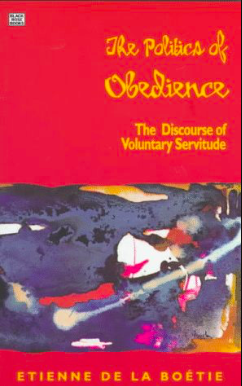La turbulenta relación entre los poetas que protagonizan Por qué hacen tanto ruido (1992) de Carmen Ollé replantea el viejo problema que se teje en la relación entre poesía y vida. “No debo caer en la simplicidad de llamar a todo poesía” (9), afirma la narradora, Sarah, mientras comienza su historia. En este sentido, la vida no es la poesía, ni la poesía es la vida. La poesía, entonces, estaría en un espacio separado de aquel de la vida. El problema, claro está, es que muchas veces, y más en la vida de escritores (o poetas) la vida y la escritura se bifurcan. Ignacio, la pareja de Sarah, se enamora de Helena. Así, la narradora se ensimisma en la reflexión sobre su relación. El mundo deja de existir, aparentemente, y lo que sucede en la calle es ya un paisaje que nada dice a la sensibilidad de la narradora. “Ignacio sueña con aquella muchacha y yo, su esposa, ante el paso de los carros blindados, trago saliva, pálida en esta nueva y extraña desnudez que no es del cuerpo, sino de la mente” (37). Esos carros blindados que irrumpen en el marco cotextual del relato, no lo hacen en el ánimo de la narradora. El ruido de la calle no se entiende, sólo pesa el ruido del interior. Sin embargo, la vida cotidiana de la narradora registra, con responsabilidad pero sin empoderamiento, también los afectos de su entorno.
La vida familiar no sólo se desmorona por el abandono de Ignacio, sino que “si hubiera mucho dinero, la poesía no sería un obstáculo para las buenas relaciones familiares; no siendo así, el día se agriaba y la poesía resultaba también en la picota, como una presencia que nada tenía que hacer en este mundo” (37). De hecho, la “crisis” familiar también está estrechamente ligada a los altibajos laborales que la pareja tiene. Por ejemplo, la vida académica de la narradora está completamente abollada, y esto afecta su imposibilidad de escritura también. Si los poetas son los irresponsables, los no productivos para el capital pero excedentes de sentido para la vida, entonces la narradora piensa que habría que “renunciar al trabajo que tengo, volverme irresponsable” (40). La poesía, sin lugar en ese mundo de ruido y de precariedad, tendría un espacio una vez que la narradora consiga “el vacío o el vértigo que me depararía esa valentía” (41) de dejar su trabajo. Sin embargo, la narradora no se deja caer en el vértigo. No renuncia, resiste en lo más elemental de sus hábitos: leer y escribir.
Si literatura y vida están separadas, entonces, vivir refugiado en los libros no tendría porqué repercutir en el campo de la vida. Conforme la separación de Ignacio se complica, también se complica la situación en las calles, allá donde los carros blindados comenzaron a atiborrar el paisaje. “Estaba leyendo una novela diaria, de ese modo escapaba de tomar decisiones. Este alivio era falso, puesto que a la cocina ya habían entrado ladrones y tal vez en una tercera incursión se atrevan a forzar las puertas interiores. La miseria de la gente avanzaba” (59). La vida literaria, o al menos su versión contemplativa, provoca un “falso alivio”. Desde esta perspectiva, separar vida y escritura (o poesía y vida) es un alivio falso, porque separándolas no se resuelven ni los problemas de la vida, ni los de la escritura. Hay, por otra parte, momentos en que escritura y vida se sintonizan. El ruido de la calle, como la música que escucha la narradora al final de la narración y los gritos de Ignacio al dejar a la narradora, todos se transforman en alaridos, “¿En qué momento aquellos alaridos me parecieron los gritos de la belleza?” (95). Si la vida pudo ver belleza en esos alaridos que parecían “gritos de belleza”, ¿no será porque el ruido guarda múltiples devenires? A su vez, la pregunta de la narradora, ilustra que vida y escritura no están separadas pero para entenderlas sólo se les puede escriturar en un doble registro. Aquello sensitivo y afectivo para la vida, sólo puede ser escriturado en “apariencia”. El ruido sólo tiene pareceres, no porqués. A su vez, la razón del ruido, su motivo, estaría fuera de la forma. Sin embargo, ¿cómo saber que era ruido si no tenía forma?









